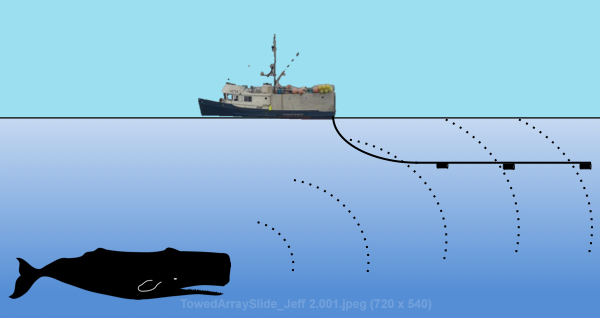A new report, Real Time Localization of Sperm Whales Using Towed Array Hydrophone, has been released about fishermen's participation in conducting research with the Southeast Alaska Sperm Whale Avoidance Project (SEASWAP). Fishermen helped to test a system that can be used to find and record sperm whales while fishing or transiting. Read the full report here.
A total of 25 sperm whales were detected with the towed array system during a three day offshore survey which indicated a higher density of whales along the 200fm depth contour (a preferred fishing ground) than the 1000fm contour. Detection ranges for whales varied from two to eight miles. General localization of whale position ahead of, or behind the vessel, could be achieved by ear using headphones. More accurate localization was possible using PAMGUARD software to calculate and display bearings on a computer screen, however the current PAMGUARD click detector and user interface was not sufficiently “fishermen friendly” to allow consistent use by non-trained individuals. Optimum cable length to balance noise reduction and deck handling logistics was approximately 150 meters. Detections were possible at normal transit speeds (6-8 knots), however, noise decreased and detection range improved with slower vessel speed.
Tracks and vessel locations when sperm whales were detected acoustically during SEASWAP’s towed array cruise on June 17th-19th offshore of Sitka, AK. The cruise approximately followed the 200fm contour and the 1000fm contour. The erratic lines in the south eastern section of the track indicates an interruption of the survey when sperm whales were encountered near a fishing vessel and a RHIB was deployed to collect tissue samples and photographic identifications. There were 16 separate encounters with an estimated 20 individuals detected on the 200fm track and 5 encounters all with single animals on the ~1000fm track.



